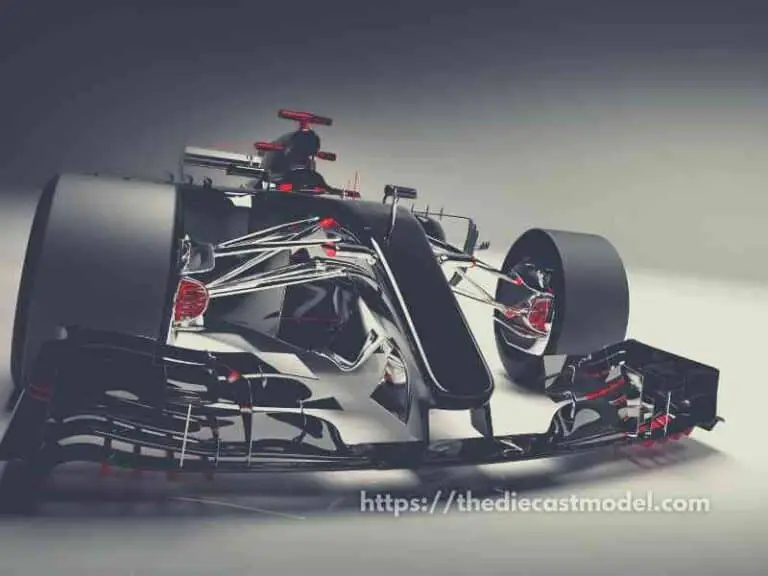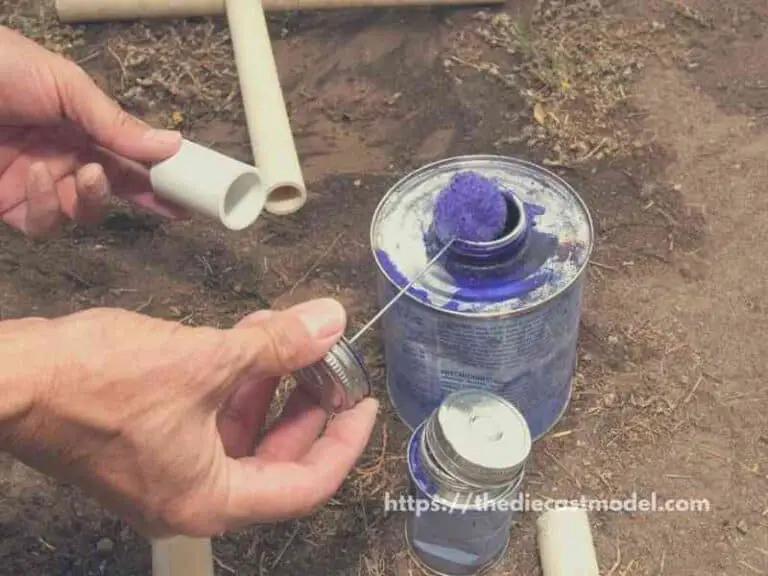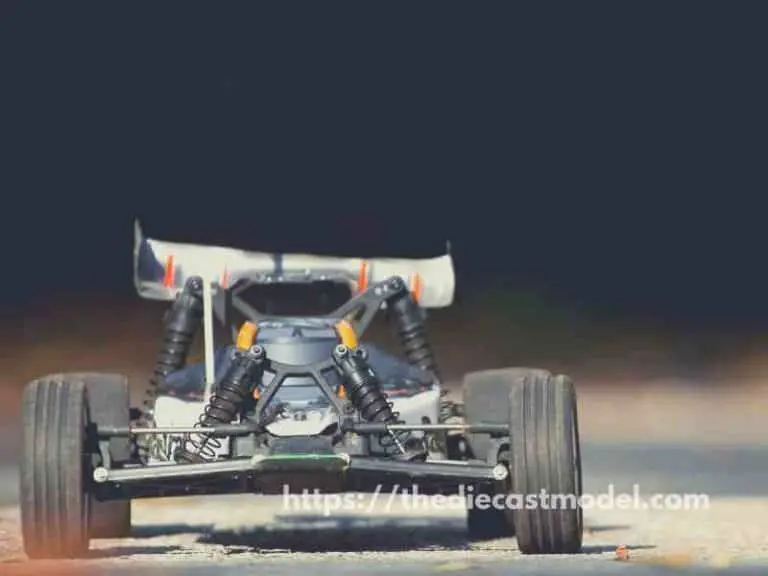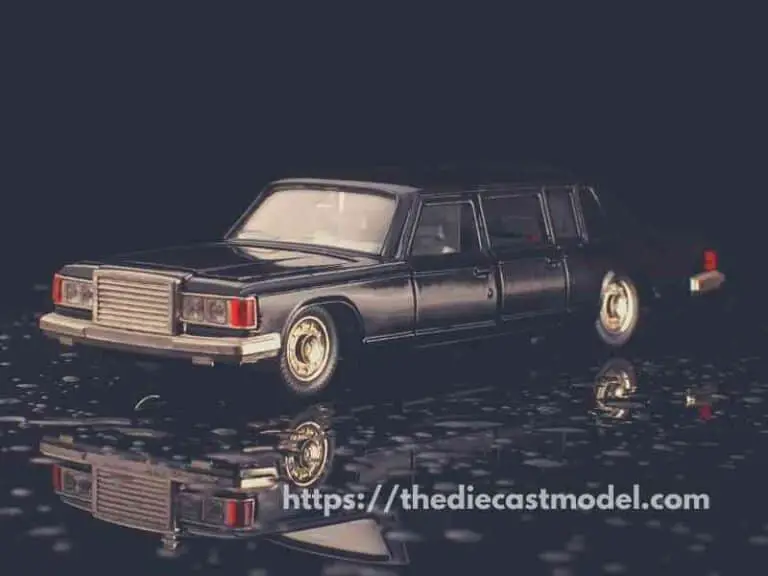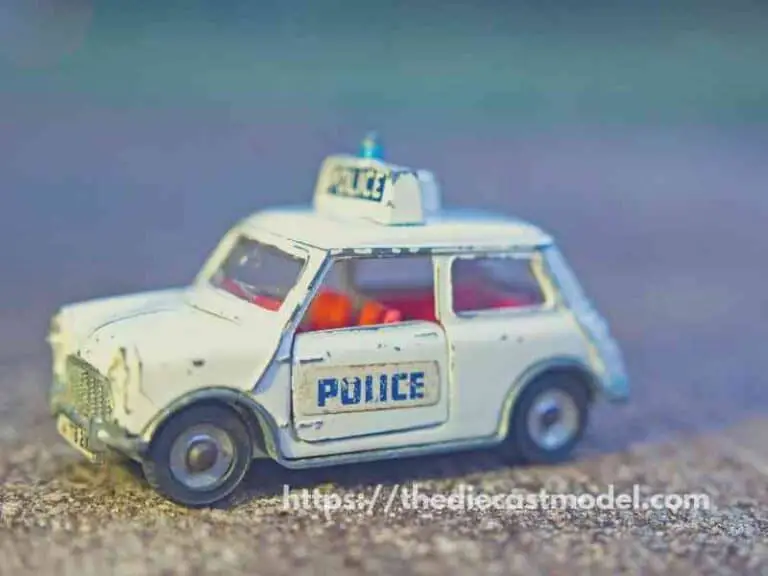Is Tamiya Cement Strong: How Good is Tamiya Regular Cement and Its Uses?
When it comes to model kit building, we have many choices for gluing materials, one of which is Tamiya Cement. How good is Tamiya cement? Moreover, is Tamiya plastic cement strong? Finally, how does it compare to other types of model glue? Let’s find out.
Tamiya cement is strong. In fact, plastic cement is stronger than superglue when it comes to torsional strength. Furthermore, regular Tamiya plastic cement is more robust than extra-thin cement and Revell Contacta, making it an ideal bonding agent for plastics, rubber, wood, ceramics, and metals.
In this blog post, we will talk about how good Tamiya plastic cement is, its uses, and how long plastic cement lasts.
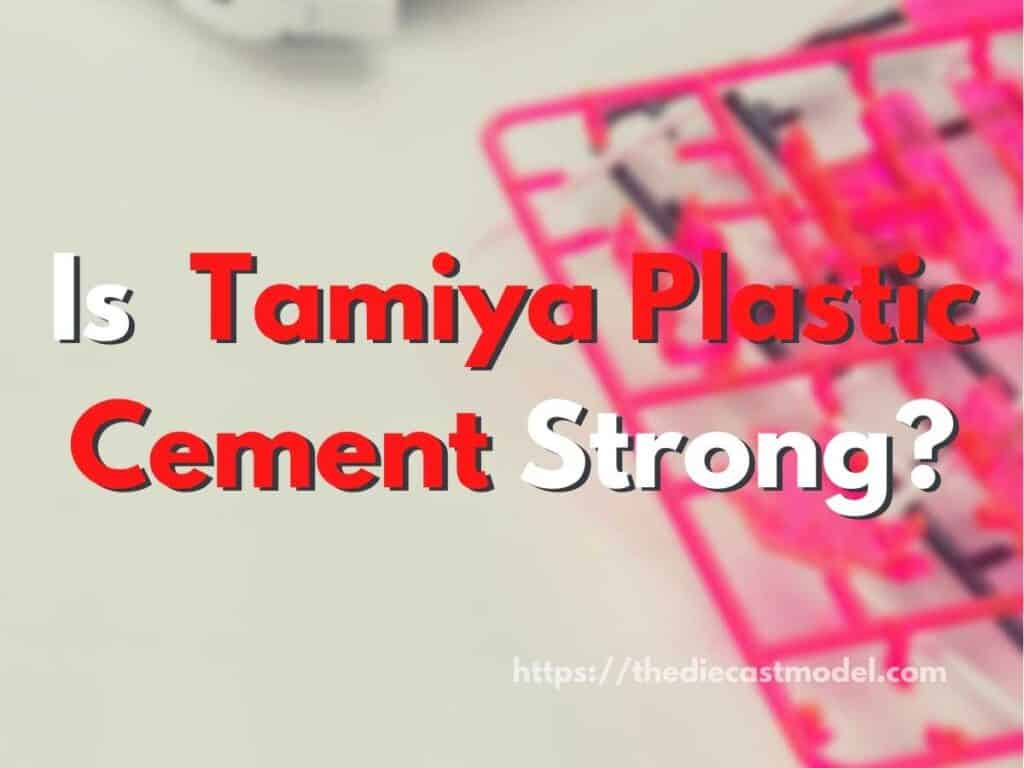
Is Tamiya plastic cement good?
The Tamiya plastic cement is good for bonding as it provides one of the strongest bonds for plastics. However, it is worth noting that the different types of plastic cement are best for a specific purpose. For example, the regular Tamiya plastic cement is good in connecting parts because of its strength, while the extra thin glue is good for welding small joints.
Minis models, and dioramas, a YouTuber, provide a good evaluation of all types of Tamiya cement.
The vlogger has compared Tamiya Extra Thin Cement regular and quick setting, white and yellow, and Revell Contacta.
He used little plastic cards and cut sprue to compare the bonding strength.
In his comparison video, he demonstrated that nothing beats regular Tamiya cement with a white cap for binding strength.
Although the regular one takes longer to dry, the ordinary plastic cement has an unrivaled bonding strength.
The extra thin cement, on the other hand, dries quickly but has the weakest bonding power.
However, comparing these products will be comparing apples to oranges. As you become experienced, you’ll realize that different products serve different purposes.
If you want a complete comparison between the regular plastic cement and the extra thin cement, feel free to check this blog post: Extra thin plastic cement vs. regular plastic cement.
The capillary action drives Tamiya Extra Thin Cement.
Capillary action is the capability of a liquid to move upward through narrow gaps without the aid of external forces.
Surface tension and intermolecular forces between the water and the surrounding surface lead water molecules to move upward during the action.
The degree of water molecule adhesion on different surfaces will vary.
Tamiya’s extra thin cement makes use of capillary action by filling every small crevice between the two surfaces you’re trying to join.
The extra thin cement is best used when capillary action is the primary means of distributing the product through the gap.
This glue serves best when you are seam welding well-prepared pieces.
Because of its strength, regular cement is more suitable for bonding together components that were not intended to be together.
For example, gluing scratch-built parts and plate additions to surfaces.
Extra-Thin cement can also be used as a thinner if you leave your regular cement open and it starts to thicken.
Plastic Kit Freak, a vlogger, uses Extra thin cement as support.
To make the bond more secure, he spreads the extra-thin cement along the borders of each component before cementing them together with the Tamiya regular cement.
Plamo Therapist, like him, uses the extra thin plastic cement as a supplement and glues tiny parts that must cure quickly.
In terms of the bonding strength of the extra-thin cement, it’s really strong.
Though it is not as powerful as Tamiya regular cement (white cap), it is stronger than any comparable product.
Despite its texture, the Tamiya extra thin joints are very sturdy.
According to Tibbs Forge, after some experimentation, he realized that this glue fulfills the promise given by all plastic cement—it melts and welds plastic.
Because its chemicals are so strong and the glue is so thin, capillary action melts the plastic in reverse.
While describing the incredible strength of the regular Tamiya, Plastic Kit Freak cautions that there is no back off when using ordinary plastic cement as it is thicker and stronger.
If you use the regular one and make a mistake, you cannot undo it, and applying force will damage the parts.
So, it’s evident that both the regular and extra thin stuff of Tamiya provides a strong bond when you use it wisely.
For a complete explanation and properties of the extra thin plastic cement, feel free to check this blog post: How does Tamiya Extra Thin Cement Work?
What is plastic cement good for?
Plastic cement is good for bonding plastics, particularly polystyrene plastics. However, it can also be used to bond other plastics, ceramics, wood, rubber, and metals. Furthermore, plastic cement is also suitable for filling holes, gaps, and cracks that other glue types don’t provide.
Lastly, it also provides more torsional binding strength compared to superglue.
Plastic cement is one of the most versatile adhesives on the market today.
Various materials can be glued together with it, from wood and plastic to ceramic and metal.
Materials are merged in a long-lasting bond by the cement. Having it around the house is convenient because of its various uses.
Plastic cement is an absolute must for anyone building model kits.
A wide range of model goods, such as aircraft, vehicles, boats, toys, and figurines, can be bonded securely and for an extended period with this cement.
Plastic cement comes in handy when you need to fix anything quickly around the house.
Plastic cement works well on porous materials like plastic, glassware, ceramics, wood, rubber, and metal.
The cement can be used to repair a broken or chipped item instead of replacing it. This prevents you from having to make a new purchase.
In addition, plastic cement can be used to repair shaky or broken furniture fast. It’s also convenient for filling in holes in the wood.
The glue’s sealing function helps to prevent decay and increase the life of wooden objects.
Welding plastic pipes together is an everyday use for this cement.
You can use it for plumbing and other PVC pipe-related projects.
The cement works well because of the plastic properties of the piping components.
For the interior of your home, you can use plastic cement to attach plastic laminates and veneers to the wall.
It only takes a while for the cement to solidify and cure after it is applied.
Plastic cement binds the materials quickly and securely.
This cement can be used to attach plastic laminates to counters. You may also use it to apply wood veneers to cabinet doors to achieve the desired look.
If you are interested in comparing superglue and plastic cement, feel free to check my other blog post here: Plastic Cement vs. Superglue.
How long does plastic cement last?
Plastic cement lasts about two to three years if left in the bottle. After some time, regular plastic cement turns yellowish, which reduces its binding strength. The bonds created by plastic cement last indefinitely depending on numerous factors, such as how good the application is and how much pressure these bonds get through time.
However, extra thin plastic cement does not go bad even if it turns cloudy since the cloudiness doesn’t affect its binding strength.
When Tamiya cement is left unused for a lengthy period, it can dry out in the bottle.
It doesn’t happen with the extra thin cement. In fact, you can use it as a thinner for the regular glue, as I mentioned earlier.
The extra thin cement in the pot begins to fog up after a while.
In terms of effectiveness, there’s no difference.
Don’t freak out if you see it clogging the brush. It will eventually self-clean.
If you notice your regular Tamiya cement (white cap or orange cap) is turning yellow and not flowy enough, you must replace it with a new one.
It will stick and work as super glue, but the solvent, at that time, will evaporate and lose the bonding strength.
Model building is a great time pass and a time-consuming job at the same time.
When you just started, you don’t have to work with so many tools.
However, whatever tools you use, make sure it aids your passion well and does not frustrate you.
Tamiya cement, known for its bonding strength, is a must-have product on every modeler’s working bench.
It’s evident why it’s so popular among the pro modelers.

“Only the things I love”
thediecastmodel.com is reader-supported. When you buy through links on the site, I earn an affiliate commission.
So, here are the things I love when taking care of my Diecast Models.
Cleaning the Models
The first we are going to talk about is cleaning the models.
Removing Dust
- Air Brush – For me, this is the best since it not just removes dust but you can use it in painting/clear coating.
- Air Duster – This is a good alternative to Airbrush
- Normal Brush – If you are short on budget, you can use a normal brush. However, make sure that the brush has soft bristles because there are some hard brushes than can cause scratches. That’s why I recommended a good brush that can do the job properly.
Cleaning and Shining Hacks
Well, here are some of my cleaning hacks for removing scratches, oxidation, and so much more.
- Removing Decal Adhesive – Use Goo Gone on those hard-to-remove decal adhesives. It works fast and works like charm!
- Waxing and Polishing – Here is something a lot of people don’t know. Waxing protects the clear coat and paint while polishing shines the model. Instead of buying it separately, use a 2 in 1 to save money. Get this instead.
- Beginner Wax – The wax I recommended earlier is good and provides the best results based on my experience. But a beginner might have a problem especially if they’re not good at applying wax. Solid wax reaching hard to reach surface can be hard to remove. You have two choices here. One is to use a qtips to reach those surfaces, another is to use a liquid wax I recommended.
- Cleaning Wheels, Rubber, Plastic – Do not forget that rubber and plastic surface are quite different, especially in the cleaning process. Just wiping it down won’t do the job. That’s why I use Meguiar’s Vinyl and Rubber Cleaner and Conditioner. Works like charm!
- Make the Wheels Shine! – Making our models look good won’t be complete without tiny details such as shiny wheels! Do not forget this because however small this is, the difference can be as big as night and day.
- Remove Scratches Easily – Tiny scratches are not the end for your model. Here is a simple trick I’ve been using to make my models look scratch-free even without repainting. Use T-Cut.
Painting the Models
Painting Tools
Make sure when you paint models, have these ready.
- Tape – A tape is important if you are painting a straight line. Furthermore, it will prevent your paint to scatter on other parts. I recommend Tamiya Tape since it is really made for models. Furthermore, they stick really well preventing paint splatters.
- Brush (Beginner) – Find a good set of brushes to paint your models. Of course, you can opt for an airbrush but it’s quite expensive.
- Airbrush (Intermediate/Expert) – This will yield a significantly better result than an ordinary brush because you can easily spray the paint evenly. I recommend this if you know what you’re doing.
- Stand(Optional) – Stands are good because it can be hard to manually hold the models while painting. It is optional but in my opinion, the price is well worth it for the comfort it gives.
- Drop Cloths – Drop Cloths will protect your surroundings from the paint.
- Primer – The most common beginner mistake I see is painting models without any Primer. A primer will prevent imperfections such as bubbles or paint not sticking to your models. It is a small price to pay for quality results.
- Clear Coat – A clear coat will protect the paint of your models. This will make the paint last longer. Also, it is the one responsible for making your models shine.
Paints
Of course, you can’t do painting properly without paint. So here are the ones I recommend.
- Acrylic Paint – Good for beginners because it dries quickly. However, it doesn’t produce results as good as enamel paint.
- Enamel Paint – Provides a good quality finish and longer-lasting paint. However, it takes longer to dry and requires expertise to use.
Model Maintenance
Model Storage
- Simple Wood Cabinet – While it doesn’t let you display your models, wooden cabinets are good storage for these models. For one, they are not heat conductors which means that the temperature inside will remain constant and remain cool. Furthermore, they prevent light from reaching the models which can cause oxidation.
- Clear Cabinet with Lock – If you want to display your models, then I recommend this. It closes so dust won’t easily get to your models. I also recommend you don’t put more than 1 model in each compartment since metals are good conductors of heat.
Model Photography
So you want to show off your models to others? Well, I got you covered.
Here is my beginner-friendly model photography tutorial that teaches everything from taking pictures to the editing process.
You will also see me doing hands-on photography in that tutorial.
Here is the link: How to Take Pictures of a Diecast Model or Model Kit | Helpful Illustrated and Video Guide

